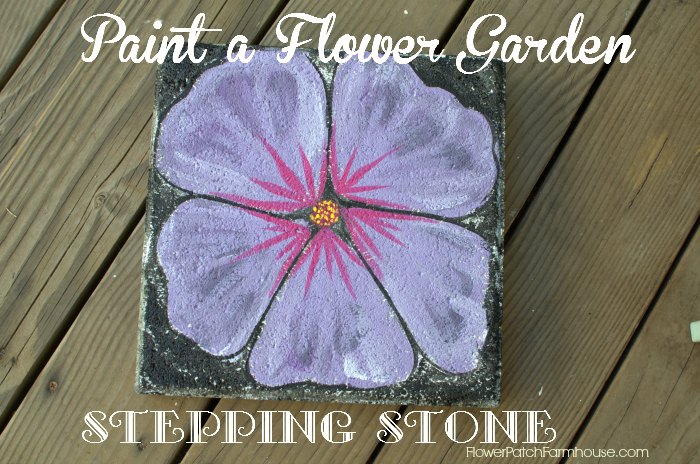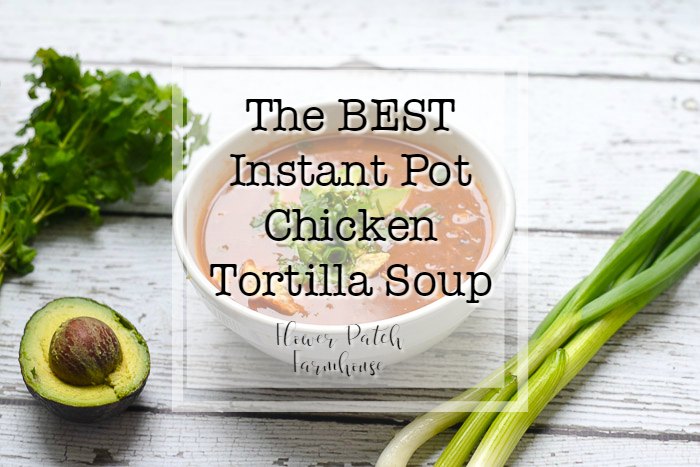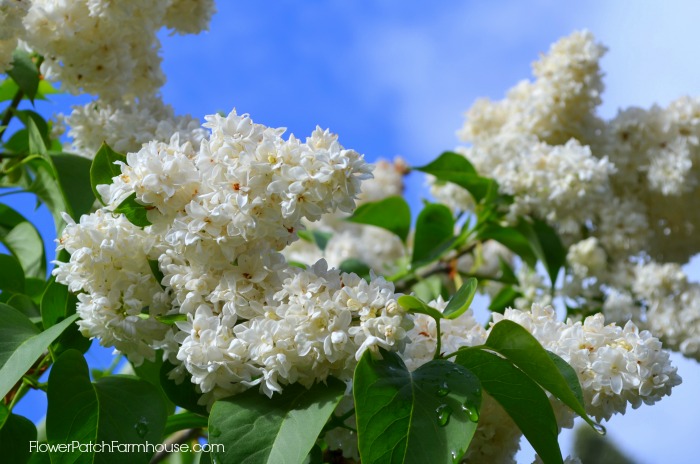Best Way to Fertilize Petunias!
Your clear-cut guide on how to fertilize petunias. What is the best petunia fertilizer? You might be surprised!
Petunia flowers are an all-around favorite flower for many. I am a gardener that always has petunias in my summer garden.
They are vibrant and versatile and can bring loads of color to your landscape, containers, and hanging baskets.
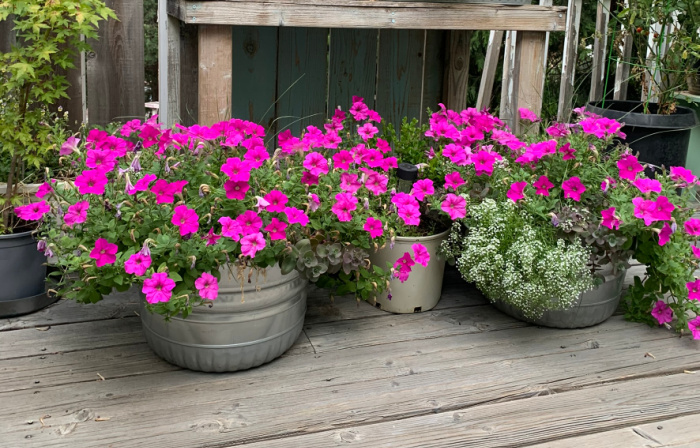
To grow the most healthy and eye-catching petunias, proper care and attention are important.
Like most plants, petunias need nutrients to perform their best.
In this guide, you will learn about the best fertilizers for petunias and how you can put them to use for the most delightful floral display!
For more on How to Grow Petunias press Here!
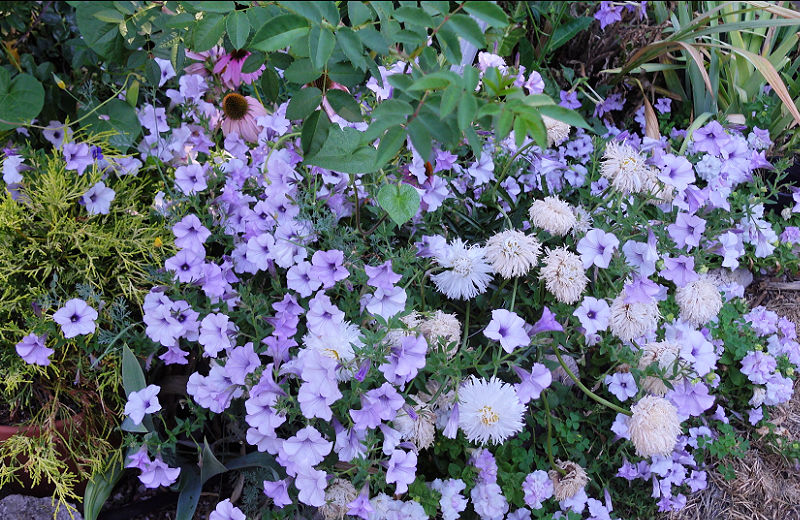
Petunia Fertilizer Requirements
Before you start force-feeding any plants you need to feed your soil! I preach this loud and long here.
Using compost, mulches, and manures to build organic soil is a long game but it will go miles in helping you to keep your fertilizer costs lower and it is much better for the environment and our beautiful plants.
Because petunias are producing blooms so abundantly they need a steady supply of nutrients. Proper fertilization provides what may be missing in your soil.
All the best garden tips
Build Nutritious Soil!
Building your organic garden soil is essential for long-term gardening success. Here you will learn the best tricks for great garden soil. Beginner gardener friendly!
What to Fertilize Petunias With
Many will say petunias need a balanced fertilizer with NPK numbers the same straight across. For example, 6,6,6 or 12,12,12.
These stand for the primary nutrients most plants need. NPK stands for Nitrogen, Phosphorus, and Potassium.
It should be noted that most soils are not deficient in either Phosphorus or Potassium as neither wash from the soil.
Nitrogen is the main nutrient that can be leeched from soils with heavy rains or frequent watering. Most experts agree all plants only need a nutrient ratio of 3-2-1, even petunias.
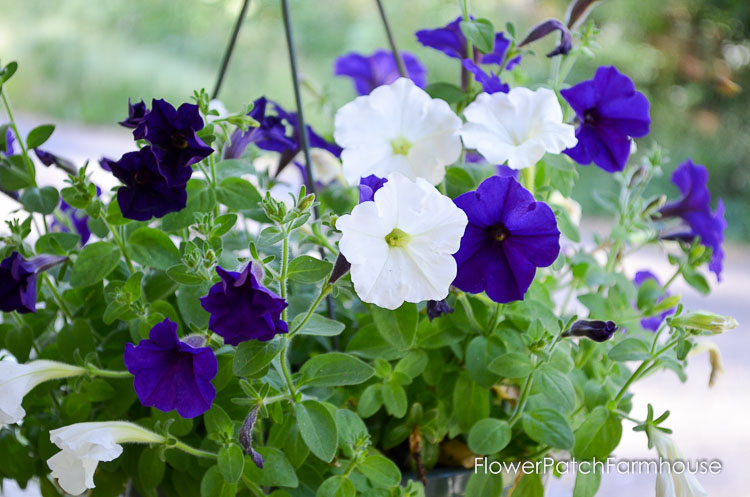
So with all the choices out there which is the best?
You do realize the best you will find on the internet is more opinion than really a definitive answer?
Let’s go with something that is not only great for the plants but feeds the soil as well.
For me, I choose to stay away from synthetic fertilizers as they do nothing to build soil health. If it is pink, blue or some other weird color then you know it is synthetic.
Right now I am using AgroThrive as my go-to fertilizer. The nutrients are pre-digested so the plants benefit immediately and it feeds the soil so it benefits the plants in 2 ways.
Stay tuned as I am trialing a ‘new to the market’ plant food that is made from food waste and is 3-2-1 NPK ratio!
You may read that a higher phosphorus fertilizer is needed for blooming plants but that is bunk. The so-called Bloom Booster fertilizers are just marketing.
More on that in another article which I will link here when I have completed it.
How Often to Fertilize Petunias
What is the ideal frequency for applying fertilizers to ensure steady growth and keep them blooming?
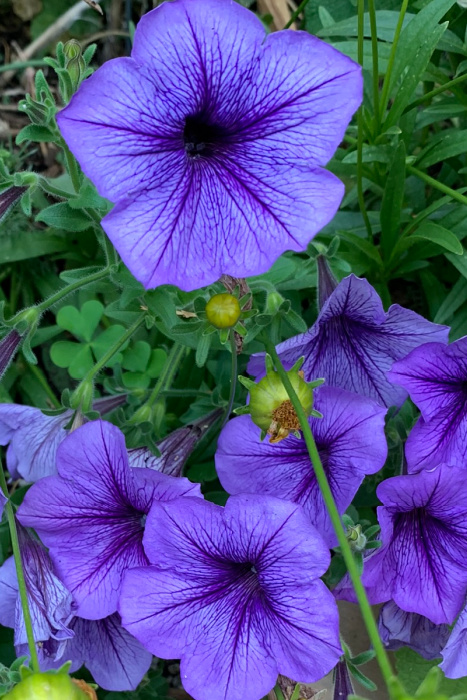
There are two types of needs:
Fertilizer for Hanging Petunia Baskets and for Petunias in Pots and Containers
When it comes to pots, hanging baskets, and containers you need to feed petunias a bit more frequently than in the landscape.
What works for me is ‘weekly”, “weakly”. That means I dilute the Agrothrive fertilizer by half and feed my petunias weekly.
This can work for most liquid fertilizers or those that you dissolve in water to apply.
Fertilize Petunias in the Landscape
The soil in my landscape has been amended with plenty of compost and chicken manure for years and it is already full of nutrients so I usually only give the petunias in the ground a diluted shot of fertilizer once a month.
Did you know that you can actually make your soil toxic by over-fertilizing? Remember what I said early about the phosphorus and potassium not moving in the soil much?
Well, if you keep adding those to the soil when there is already more than enough you can do more harm than good. You can even overdo it with compost.
Best Time-Release Fertilizer for Petunias
Okay, I get it, some are busy and don’t want the fuss of feeding plants weekly or mixing up the liquid fertilizer.
Espoma makes some good organic time-release fertilizers and Plant Tone is a universal one you can use.
There are several synthetic options out there you can use as well if you prefer. But most will tell you that even with the best time-release fertilizer petunias will need a bit of a boost with an additional bit of feed mid-summer.
Fertilizing petunias is not a hard process, but it requires some care to avoid overfeeding or causing nutrient imbalances.
So let’s take it one step at a time:
Soil Preparation
Before applying any fertilizer, ensure that your petunias are planted in well-draining soil.
Proper drainage prevents waterlogged roots, which can lead to root rot. Additionally, make sure the soil is loose and friable, allowing the roots to penetrate easily and access nutrients.
If you are using baskets or containers then use good-quality potting soil. There are plenty on the market but my go-to is EB Stones organic Edna’s Best potting soil. (it is what is locally available)
Espoma carries a good one too, I just don’t have any local availability. Shop around, read the ingredients, and choose accordingly.
When to Fertilizer Petunias
For petunias planted in garden beds or landscapes, fertilize them at planting in Spring before they start actively growing. (not necessary if you have fertile soil)
This initial feeding will set the stage for healthy growth and abundant flowering throughout the growing season.
For hanging baskets and containers, start fertilizing two weeks after planting, as the initial nutrients in potting mixes will begin to deplete.
Follow the Directions on the Label
Regardless of the type of fertilizer you choose, always read and follow the manufacturer’s instructions.
The label will provide guidance on the appropriate application rates and frequencies.
Avoid the temptation to apply more fertilizer than recommended, excessive nutrients can lead to harmful buildup in the soil. (remember what I told you about phosphorus and potassium not moving in the soil)
Also, do not use Epsom Salts, I share why here.
Frequency of Fertilizing
For most petunias, a general guideline is to fertilize them every 2-4 weeks throughout the growing season. (I shared that I do it weekly with a diluted mix)
However, different fertilizers may have specific recommendations, so you can follow the instructions on the label.
Important Tips
Avoid Overfertilization
More is not always better when it comes to fertilizing petunias. Overfertilization can lead to the opposite of what you are trying to achieve.
You could get excessive growth, weak stems, and fewer blooms. Stick to the recommended application rates to avoid this issue.
Watering After Feeding
Always water the petunias thoroughly after fertilizing.
This helps to prevent fertilizer burn and ensures that the nutrients reach the root zone where they are needed.
This is not necessary if using a liquid feed like Agrothrive.
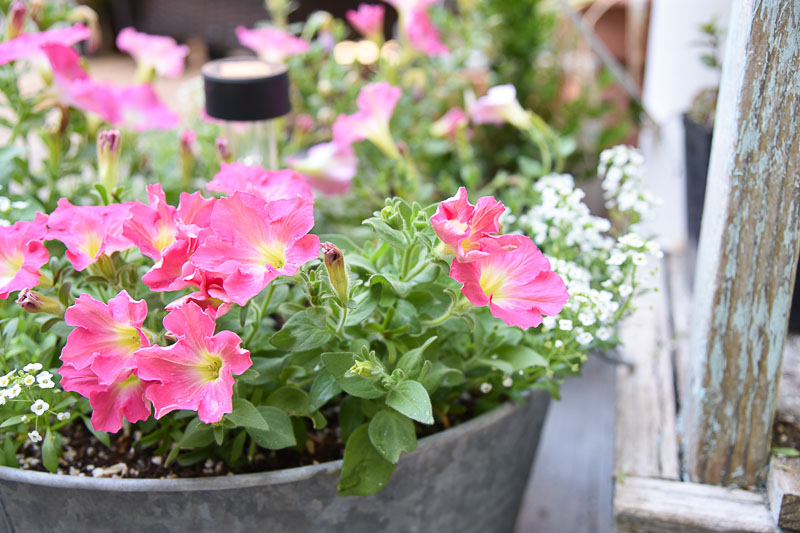
Observation
Keep an eye on your petunias throughout the growing season.
If you notice any signs of nutrient deficiencies (e.g., yellowing leaves, stunted growth), consider adjusting your fertilization routine.
Over-fertilizing can make the leaves turn yellow as can over-watering. So err on the side of caution and know that more is not always better for your plants.
The number one killer of plants is folks try to over-love them.
So in conclusion by following these simple guidelines you can have gorgeously blooming petunias all summer long.
Are your petunias getting leggy and scraggily, they may need a bit of pruning!
All the best tips
Reviving Petunias
How to revive leggy potted petunias that are looking spindly! Pruning your petunias can bring them back to looking full and lush once again.


